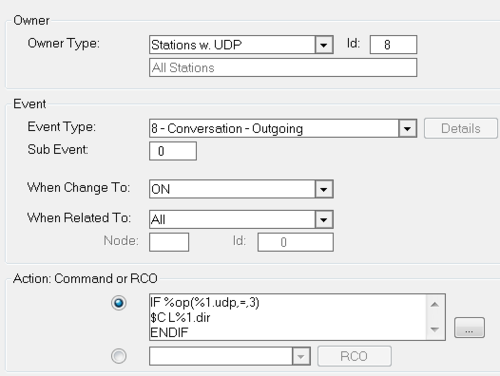%1.udp: Difference between revisions
From Zenitel Wiki
No edit summary |
No edit summary |
||
| (2 intermediate revisions by one other user not shown) | |||
| Line 1: | Line 1: | ||
{{ | {{AI}} | ||
* Returns the [[UDP group]] memberships for station, as a decimal number. | * Returns the [[UDP group]] memberships for station, as a decimal number. | ||
* Interpret the number as a bitmap, bit#0 is UDP group 1, bit#7 is UDP group 8 | * Interpret the number as a bitmap, bit#0 is UDP group 1, bit#7 is UDP group 8. | ||
| Line 8: | Line 8: | ||
UDP group: | UDP group: 8 7 6 5 4 3 2 1 | ||
Bit: | |||
Value: | Bit: 7 6 5 4 3 2 1 0 | ||
Value: 128 64 32 16 8 4 2 1 | |||
Latest revision as of 08:46, 4 October 2019
- Returns the UDP group memberships for station, as a decimal number.
- Interpret the number as a bitmap, bit#0 is UDP group 1, bit#7 is UDP group 8.
Example: If a station is member of UDP group 1, 4 and 8, %1.udp will return value 137.
- %2.udp can also be used if related-to is in local exchange
UDP group: 8 7 6 5 4 3 2 1
Bit: 7 6 5 4 3 2 1 0
Value: 128 64 32 16 8 4 2 1
Example: If calling station is member of UDP group 3, then cancel the call.


